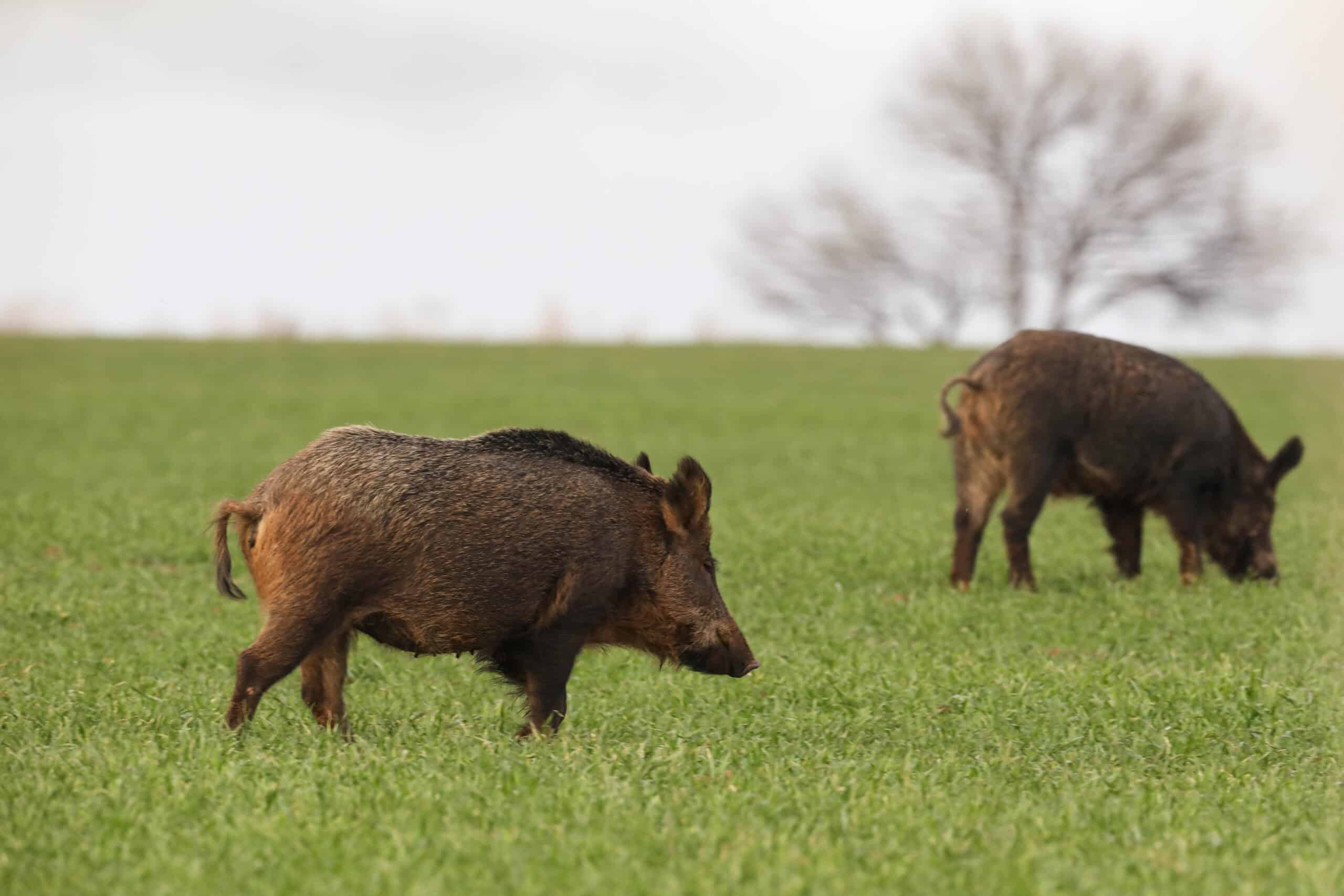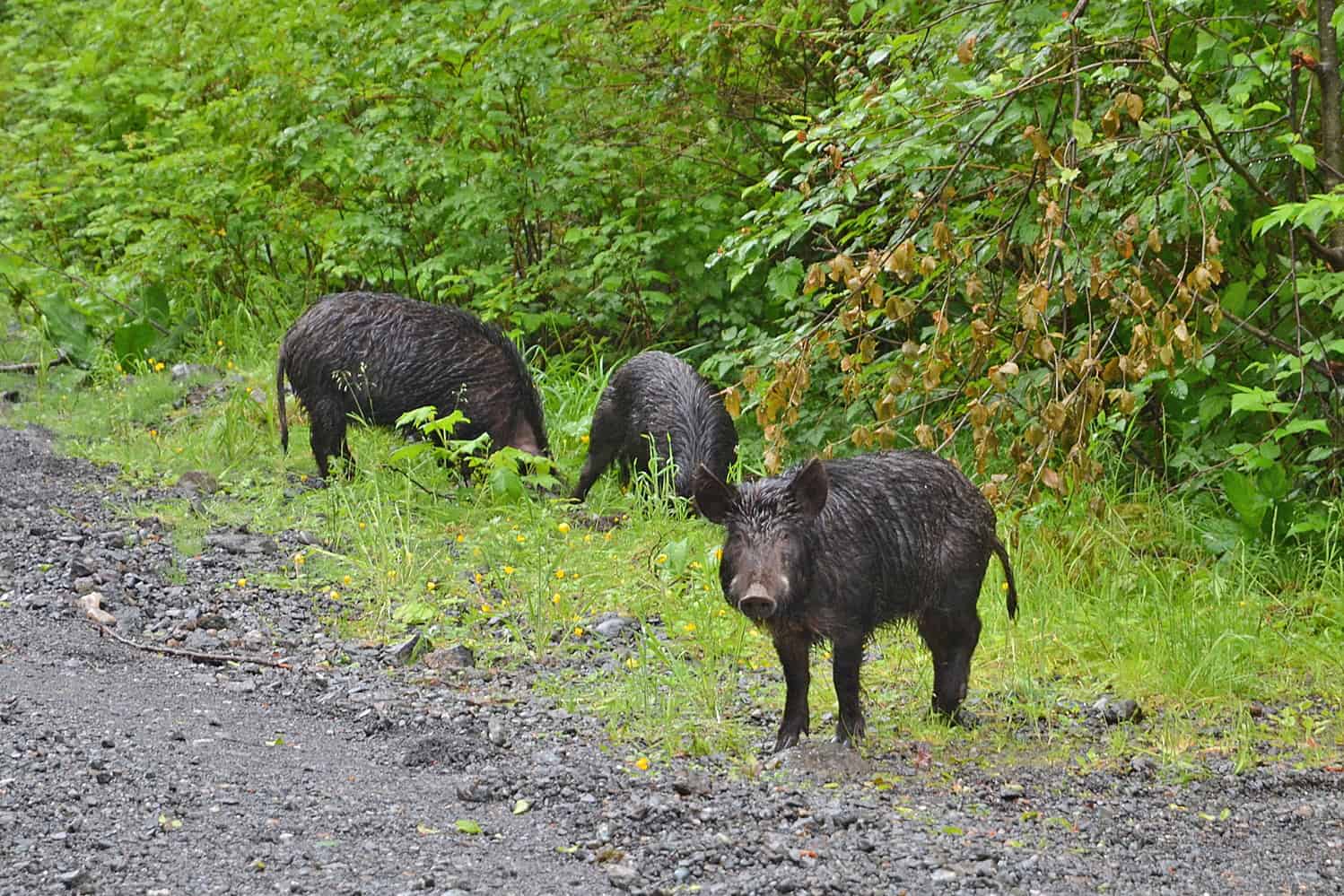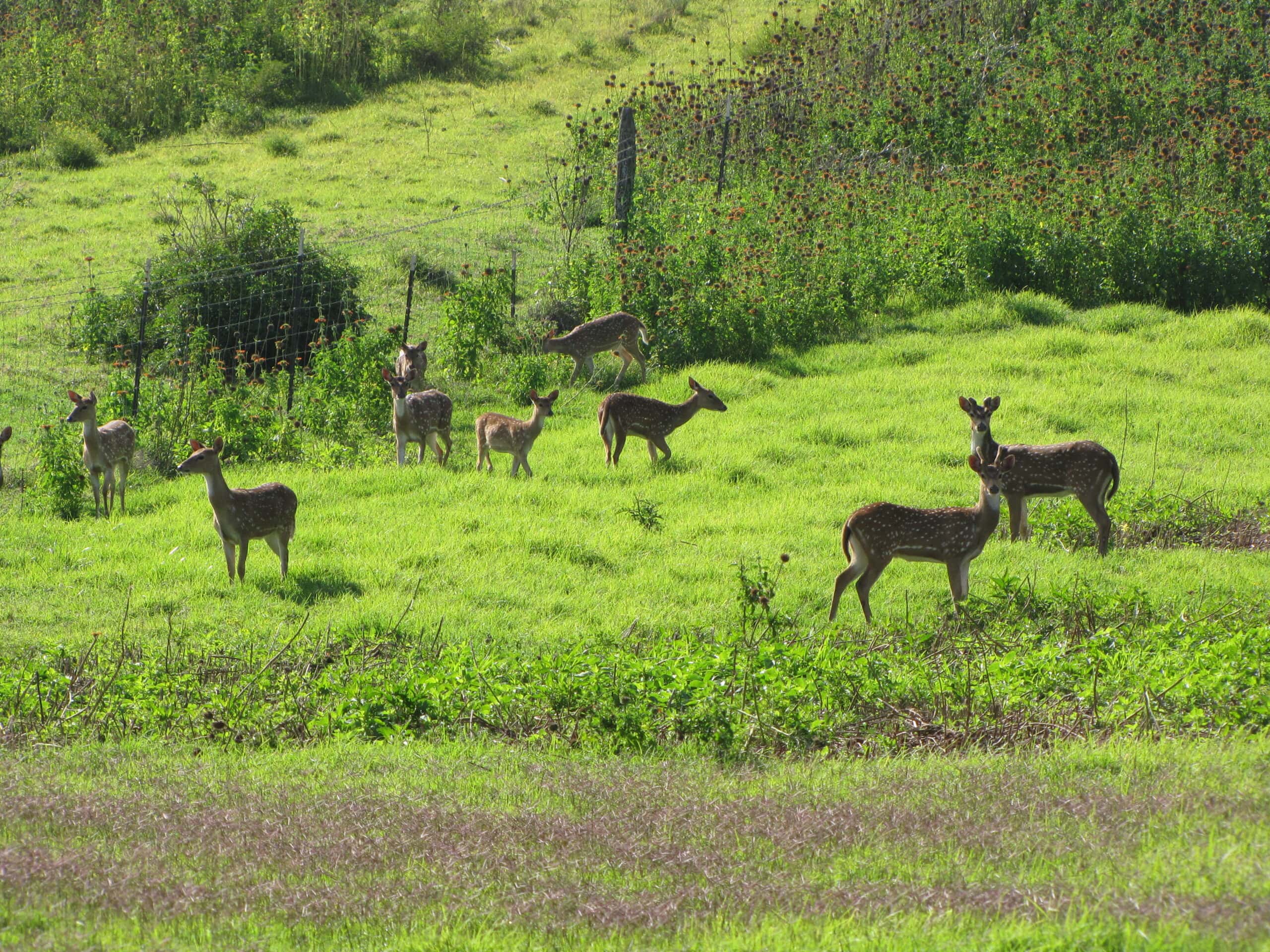Share this article
Wildlife Featured in this article
- Wild pig
Genetics help combat illegal movement of feral swine
Most wild pigs are hybrids, offering clues to distinguish them from domestic pigs
When the gate swings open on a trailer, it doesn’t take long for wild pigs to pour out into their new environment. Experts are not sure how often people move wild pigs, but they know it is contributing to the spread of invasive wild pigs (Sus scrofa) across the United States.
The illegal transportation of wild pigs (also known as feral swine) for hunting purposes has contributed to the rapid expansion of this invasive species across to the United States over the past 40 years. They are now reported in at least 35 states. To help curb the spread of these invasive animals, multiple states have passed laws prohibiting their possession or transport. However, the similarities between domestic pigs and invasive wild pigs pose a challenge to enforcing these regulations.
“Sometimes it can be difficult to distinguish a domestic pig from an invasive wild pig just by looking at them,” said NWRC geneticist Dr. Tim Smyser. But genetic analysis shows that about 97% of invasive wild pigs (Sus scrofa) in the U.S. are hybrids of wild boars and domestic pigs, Smyser said.
That has allowed NWRC researchers and partners to exploit the wild boar ancestry found in most invasive pigs to differentiate them from domestic pigs. Approximately 1,400 samples from 33 domestic breeds and 16 wild boar populations were genotyped and sorted into five genetically cohesive reference groups: mixed-commercial breeds, Durocs, heritage breeds, primitive breeds and wild boars.
Then, researchers used well-established genetic clustering techniques to evaluate the likelihood that some level of wild boar hybridization took place.
“The technique we developed basically allows wildlife managers and law enforcement officials to collect a genetic sample from a captured pig, genotype it and determine how likely it is that the pig descended from one of the domestic breed lineages, a pure wild boar lineage or a hybrid of the two,” Smyser said.
Researchers evaluated the discriminatory power of this approach using simulated genotypes and real data from an additional 29 breeds of domestic pigs and more than 6,500 invasive wild pig samples. All the simulated and real data from domestic pigs fell within the statistical distribution of the domestic pig reference groups, while 74% of the wild pig data exceeded the maximum threshold for the domestic pig reference groups and could be statistically classified as having wild boar ancestry.
“The ability to curtail illegal translocations of invasive wild pigs is an important part of reducing their spread and damage to the economy and the environment,” Smyser said. “This new genetic and statistical approach will aid in the enforcement of prohibitions on wild pig movement and introduction.”
Header Image: Most feral swine are hybrids of wild boars and domestic pigs. Their wild boar ancestry allows biologists to distinguish feral swine from domestic pigs. Credit: USDA Wildlife Services








